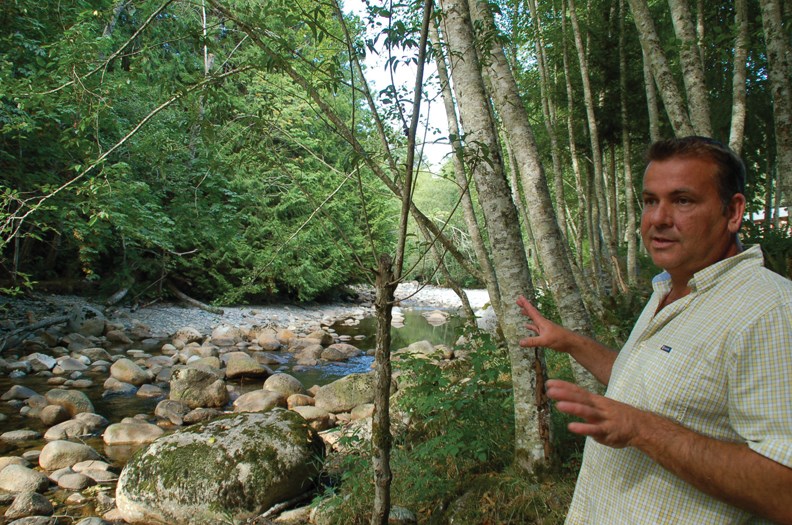Low water levels in Chapman Creek are creating higher temperatures and shallow waterways that are threatening salmon survival.
The water level in Chapman Creek is controlled partially by the Sunshine Coast Regional District (SCRD), and general manager of infrastructure services Bryan Shoji said the district is doing its best to keep flows high enough for salmon to spawn during Stage 4 water restrictions.
“We release flow from Chapman Lake to augment the creek,” Shoji said. “We actually provide more water for fish than we do for human consumption.”
He explained that Chapman Lake is basically a large reservoir and the SCRD has a control structure on the lake that releases water into Chapman Creek.
Some of that creek water is then recaptured at the SCRD’s treatment plant intake about 14 km away, while the rest is left to flow downstream.
“We try to maintain a certain flow in the creek to help support the hatchery as well as base flows just for natural fish habitat,” Shoji said. He said recently the treatment plant has been taking about 115 litres of water per second while the creek has been left with around 220 litres per second.
“If it wasn’t for our structure, that creek would be even drier than it is now.”
However, when public demand for water rises, more must be released from the lake into the creek, and it takes about 14 hours for the effect to be felt downstream.
Those changes in water levels have Chapman Creek Hatchery manger David Burnett concerned. He said at times the creek has been “just a trickle” and that when salmon do start to spawn in the creek, some may get trapped if the water level drops again.
In addition, he said, the extremely low levels in the creek right now have caused much higher water temperatures than normal, which are detrimental to salmon survival.
The optimal water temperature for salmon is between 8.5 to 15.6 degrees Celsius, and recently the water in Chapman Creek has been hovering around 18 degrees.
Above 20.3 degrees Celsius, cold-water fish stop eating and die, Burnett said.
The hatchery uses flow-through creek water in its operations, and right now baby salmon are being kept alive in tanks with the addition of well water to keep the temperature at around 15 degrees.
“We’re using well water for the first time ever,” Burnett said.
“The well water sits at 6 to 8 degrees Celsius so it’s bringing our average temperatures of 18 down a few degrees, but we have to infuse oxygen into the water because there’s less oxygen in the well water. So we have oxygen tanks set up just like a little mini fish hospital.”
With careful monitoring, Burnett is confident the hatchery will be able to keep its fish alive through the summer, but he’s not sure about the fate of the salmon waiting at the mouth of the creek to spawn.
In an effort to help give the spawning salmon a fighting chance, the Department of Fisheries and Oceans has closed the creek to fishing until further notice.
Burnett also asks people to stay out of the creek and to leave the salmon alone while they’re trying to spawn.
“I saw some kids down there hitting the fish with sticks recently,” he said. “The salmon are stressed enough as it is. We don’t need to add to it.”



